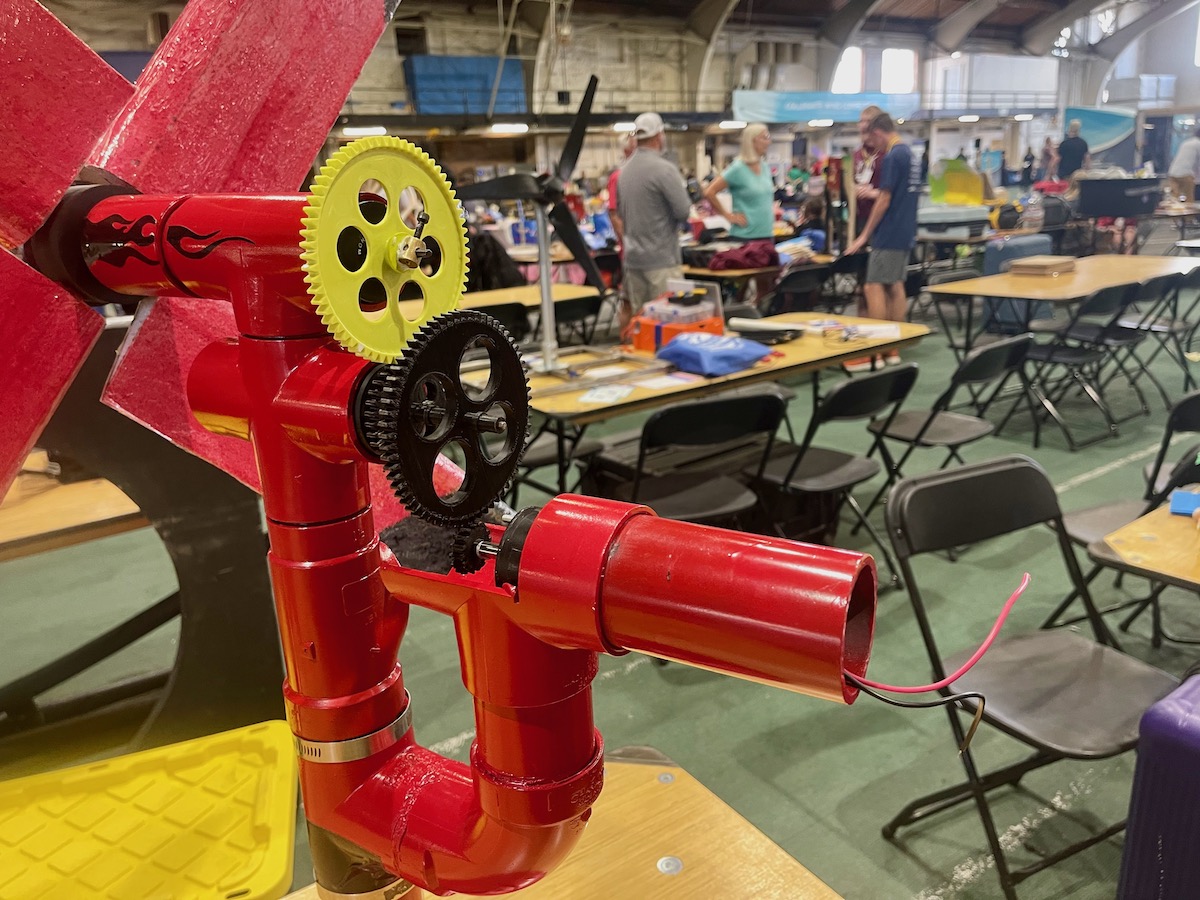The 2023 National KidWind Challenge, hosted by the University of Colorado Boulder on May 17-19, brought together over 300 students from around the country and beyond to compete in a unique engineering event. Participants were tasked with designing and assembling a working wind turbine, with the best team from each age group taking home a prize.

Pedro, Zacch and Coach Michelle Daly of team “The Quiltblockers,” Darlington, Wisconsin
The teams who came to Colorado earned their chance to compete by winning KidWind’s state championship competitions. Every team put in a lot of work to get to the National KidWind Challenge.
What is KidWind?
Educator Mike Arquin launched KidWind in 2003 to fill an emerging need for good educational materials addressing renewable energy topics for K through 12 students. Since then it has grown into the international leader in clean energy education.
KidWind makes curricula and materials available to students across the nation and in several countries outside the U.S. to learn about renewable energy through hands-on activities. Students work on projects in the classroom to explore the science of renewable energy along with completing practical projects teachers and students build together.
The importance of National KidWind Challenge
The National KidWind Challenge is part of the organization’s broader mission to prepare the next generation for jobs in renewable energy. With the industry growing so rapidly, educated, qualified professionals have no shortage of job opportunities.

The Tucumcari Rattlers entry into the SailCar competition
Kathy Jackson, a KidWind instructor from Oklahoma, said, “Kids in the K-12 space are able to see what their future might hold. Regardless of whether kids want to go to college or a trade school, there are opportunities for them.”
The founder of KidWind, Mike Arquin, said, “We’ve put a lot of challenges on the kids this year, and they are all coming through with flying colors. Every year I am continually impressed by the level of dedication, talent, and enthusiasm these kids bring. It’s inspiring.”

Los Girasoles Ventosos, Beloit, Kansas
The Competition and Challenges
The road to Boulder was a long one. The kids brought intensity to the competition.

A turbine, mid repair
Each team presented a model turbine project to a panel of judges, who questioned them on materials used and the thought process that went into their builds.
Later, the teams put their turbines into a wind tunnel equipped with sensors to measure the efficiency of each turbine under simulated real-world conditions.

The Montgomery Windbreakers, Montgomery, Pennsylvania
Solar Energy on the Scene
The 2023 competition introduced solar energy challenges for the first time. The fresh set of challenges gave participants an opportunity to explore new elements of the renewable energy industry.
One challenge tasked teams with building a solar water pump. In the media challenge, teams designed marketing posters for a solar powered town called KidWindlandia. The media competition sparked discussions about the real-world potential for such a development.

The Goblins, Beloit, Kansas
Collegiate Partnerships
The Collegiate Wind Competition took place alongside the National KidWind Challenge, and each of the KidWind teams had a college student assisting them during the sail car challenge.
“Having the college students accessible to the K-to-12 kids is really great,” Jackson said. “It shows them that this is an option for themselves in the future, but also it’s great to see the enthusiasm the college students have for working with the kids.”

The Whirlwind Kittens, Clovis, New Mexico
Awards Ceremony
The competition ended with an awards ceremony and all the participants were excited to see who had won in various categories.

Mike Arquin opens the awards ceremony
“I wish we didn’t have to do awards,” Arquin joked, “because you’ve all done an amazing job this year. Congratulations to all of you for making it here and competing!”
The teams filtered out of the awards ceremony in high spirits, and more than a few students were overheard discussing what they were planning on doing for next year’s challenge.

Teams from around the bend
Pattern is a national “Gale Force” partner of KidWind, and we are proud to be a sponsor of this year’s National KidWind Challenge. We also sponsored teams from local communities where we work. Check out the great work these teams brought to the competition: